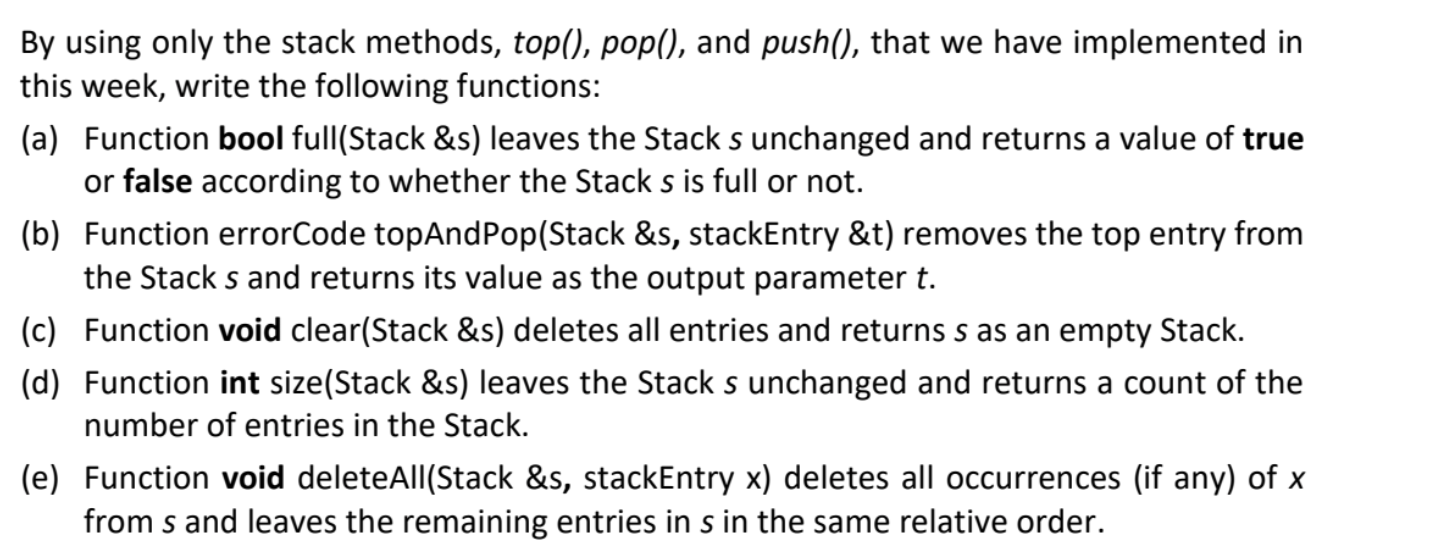Answered step by step
Verified Expert Solution
Question
1 Approved Answer
Use only top, pop, and push to implement the following functions: C++ errorCode Stack::pop(){ if(empty()) return underflow; count--; return success; } errorCode Stack::top(stackEntry &item) const{
Use only top, pop, and push to implement the following functions: C++
errorCode Stack::pop(){
if(empty()) return underflow;
count--;
return success;
}
errorCode Stack::top(stackEntry &item) const{
if(empty()) return underflow;
item = entry[count-1];
return success;
}
errorCode Stack::push(const StackEntry &item){
if(full()) return overflow;
entry[count++] = item;
return success;
}

Step by Step Solution
There are 3 Steps involved in it
Step: 1

Get Instant Access to Expert-Tailored Solutions
See step-by-step solutions with expert insights and AI powered tools for academic success
Step: 2

Step: 3

Ace Your Homework with AI
Get the answers you need in no time with our AI-driven, step-by-step assistance
Get Started


